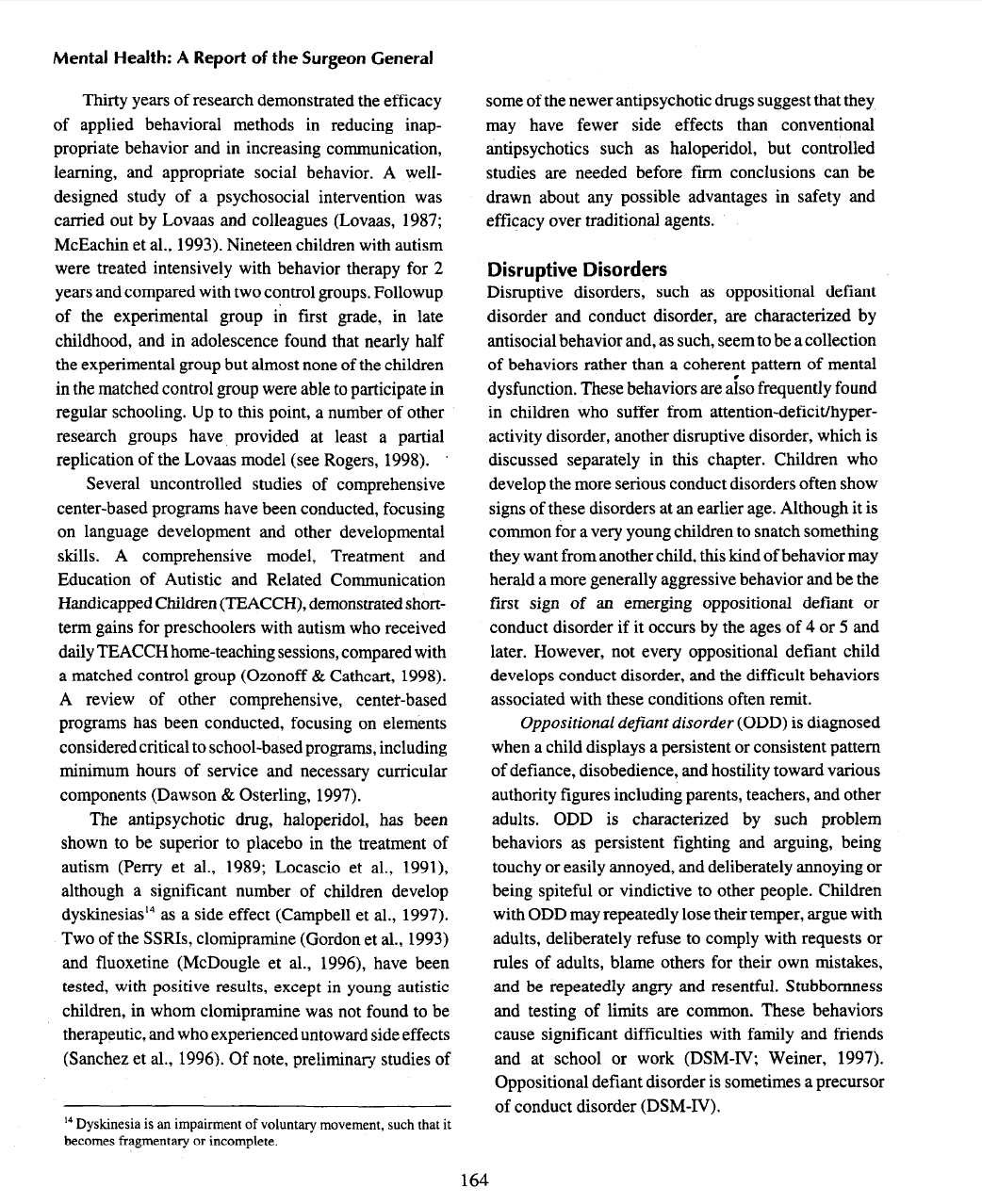An Open Letter from Dr. Lovaas
The letter reproduced below is a discussion by Dr. Lovaas regarding what is considered an appropriate therapeutic intervention for children with autism.
November 3, 1993
To Whom It May Concern:
This letter is intended to address the question of what constitutes an appropriate therapeutic intervention for a child diagnosed as autistic. A consensus has emerged among scientific researchers and practitioners that
appropriate (not ideal) treatment contains the following elements (e.g., Simeonnson, Olley, and Rosenthal, 1987):
- A behavioral emphasis: This involves not only imposing structure and rewarding appropriate behaviors when they occur, but also applying some more technical interventions such as conducting discrete trials, producing shifts in stimulus control, establishing discriminations between SD’s and S-deltas, and so forth (Koegel and Koegel, 1988).
- Family participation: Parents and other family members should participate actively in teaching their child. Without such participations, gains made in professional settings such as special education programs, clinics, or hospitals rarely lead to improved functioning in the home. (Bartak, 1978; Lovaas, Koegel, Simmons, and Long, 1973).
- One-to-one instruction: For approximately the first six months of treatment, instruction should be one-to-one rather than in a group because autistic children at this stage learn only in one-to-one situations (Koegel, Rincover, and Egel, 1982). This training need not be adminstered by degreed professionals, but can be just as effective if delivered by people who have been thorougly trained in the behavioral treatment of autistic children, such as undergraduate students or family members (Lovaas and Smith, 1988).
- Integration: When a child is ready to enter a group situation, the group should be as “normal” or “average” as possible. Autistic children perform much better when integrated with normal children than when placed with other autistic children (Strain, 1983). In the presence of other autistic children, any social behavior that they may have developed usually disappears within minutes (Lovaas and Smith, 1988), presumably because it is not reciprocated. Mere exposure to normal children, however, is not sufficient. The autistic children require explicit instruction from trained tutors on how to interact with their peers (Strain, 1983).
- Comprehensiveness: Autistic children initially need to be taught virtually everything. They have few appropriate behaviors, and new behaviors have to be taught one by one. This is because teaching one behavior rarely leads to the emergence of other behaviors that were not directly taught (Lovaas and Smith, 1988). For example, teaching language skills does not immediately lead to the emergence of other language skills, such as pronouns.
- Intensity: Perhaps as a corollary for the need for comprehensiveness, an intervention requires a very large number of hours, about 40 hours a week (Lovaas and Smith, 1988). Ten hours a week is inadequate (Lovaas and Smith, 1988), as is twenty hours (Anderson, Avery, Dipietro, Edwards, and Christian, 1987). The majority of the 40 hours, at least during the first six months of the intervention, should consist of remediating speech and language deficits (Lovaas, 1977). Later, this time may be divided between promoting peer integration and continuing to remediate speech and language deficits.
I hope this information is helpful. If you have any questions, please do not hesitate to contact me.
Sincerely,
Ivar Lovaas, Ph.D.
Professor of Psychology
Director, Clinic for the Behavioral Treatment of Children
References
Anderson, S.R., Avery, D.L., Kipietro, E., Edwards, G.L., and Christian, W.P. (1987). “Intensive home-based early intervention with autistic children.” Education and Treatment of Children, 10, 352-366.
Bartak, L. (1978). “Educational approaches”. In M. Rutter and E. Schopler (Eds.) Autism: A Reappraisal of Concepts and Treatment (pp. 423-438). New York: Plenum.
Koegel, R.L., Rincover, A., and Egel, A.C. (1982). Educating and Understanding Autistic Children. San Diego, College Hill Press.
Koegel, R.L., and Koegel, L.K. (1988). “Generalized responsivity and pivotal bvehaviors.” Generalization and Maintenance: Life-Style Changes in Applied Settings (pp. 41-65).
Lovaas, O.I. (1977). The Autistic Child: Language Development Through Behavior Modification. New York: Irvington.
Lovaas, O. I., Koegel, R.L., Simmons, J.Q., and Long, J.S. (1973). “Some generalization and follow-up measures on autistic children in behavior therapy.” Journal of Applied Behavior Analysis, 6, 131-166.
Lovaas, O.I., and Smith, T. (1988). “Intensive behavioral treatment for young autistic children.” In B.B. Lahey and A.E. Kazdin (Eds.), Advances in Clinical Child Psychology, Volume 11 (pp. 285-324). New York: Plenum.
Simeonnson, R.J., Olley, J.G., and Rosenthal, S.L. (1987). “Early intervention for children with autism.” In M.J. Guralnick and F.C. Bennett (Eds.), The Effectiveness of Early Intervention for At-Risk and Handicapped
Children (pp. 275-296). New York: Plenum.
Strain, P.S. (1983). “Generalization of autistic children’s social behavior change: Effects of developmentally integrated and segregated settings.” Analysis and Intervention in Developmental Disabilities, 3, 23-34.


